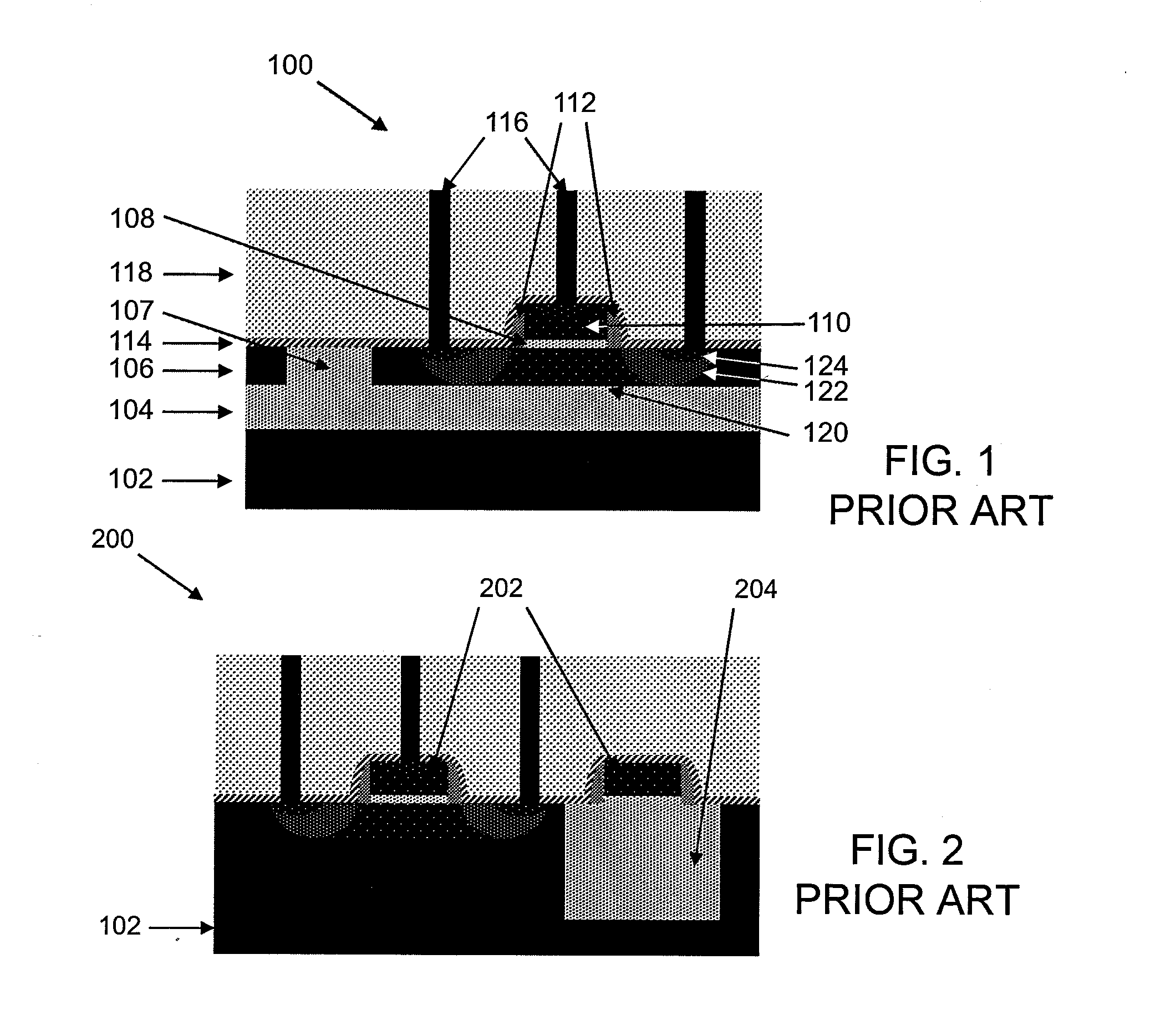Method and Apparatus for Optical Waveguide-to-Semiconductor Coupling and Optical Vias for Monolithically Integrated Electronic and Photonic Circuits
a monolithic integrated electronic and photonic circuit technology, applied in the field of integrated circuits, can solve the problems of waveguide further, low index-contrast system, and inability to attract small beams of a few microns or tens of microns in diameter
- Summary
- Abstract
- Description
- Claims
- Application Information
AI Technical Summary
Benefits of technology
Problems solved by technology
Method used
Image
Examples
Embodiment Construction
[0050]Microelectronics relies on carefully optimized complementary metal oxide semiconductor (CMOS) processes. In this document, we will refer to a CMOS process including silicon on insulator (SOI) CMOS and bulk silicon CMOS (“bulk CMOS”) variants. We will refer to SOI CMOS and bulk CMOS processes designed for microelectronics as transistor processes, in contrast to custom photonics processes that are typically tailored for photonics and do not support high performance transistors. Examples of SOI CMOS transistor processes include 45 nm SOI CMOS process supported by IBM's 12SOI (IBM, Armonk, N.Y.), as well as by GlobalFoundries (Sunnyvale, Calif.), 32 nm SOI CMOS (IBM 32SOI process), and many others in the semiconductor industry. Although silicon photonics is sometimes referred to as “CMOS compatible” in the literature, this typically refers to using silicon or CMOS compatible materials, and -not- to compatibility of devices with a standard CMOS transistor process. In this disclosur...
PUM
 Login to View More
Login to View More Abstract
Description
Claims
Application Information
 Login to View More
Login to View More - R&D
- Intellectual Property
- Life Sciences
- Materials
- Tech Scout
- Unparalleled Data Quality
- Higher Quality Content
- 60% Fewer Hallucinations
Browse by: Latest US Patents, China's latest patents, Technical Efficacy Thesaurus, Application Domain, Technology Topic, Popular Technical Reports.
© 2025 PatSnap. All rights reserved.Legal|Privacy policy|Modern Slavery Act Transparency Statement|Sitemap|About US| Contact US: help@patsnap.com



